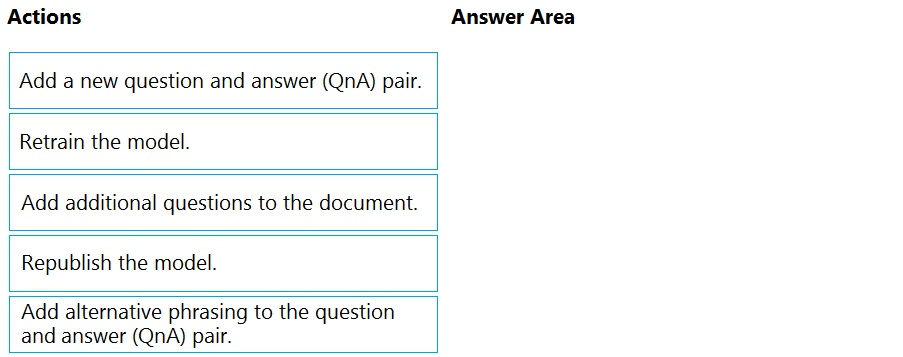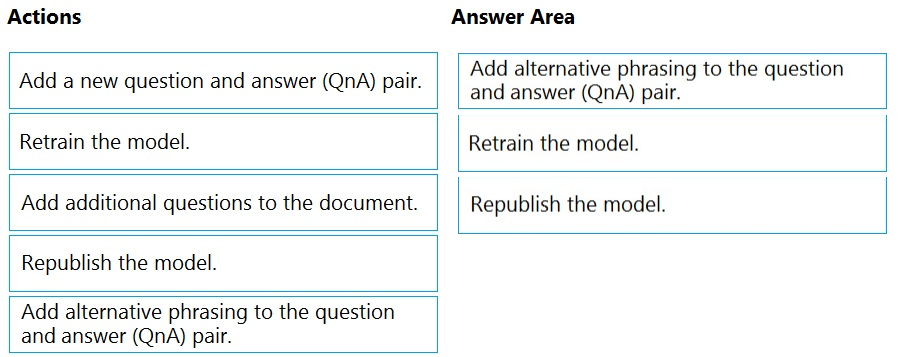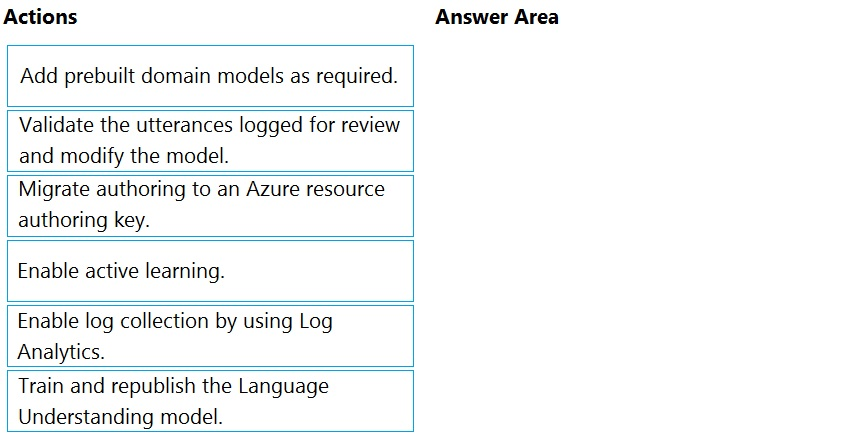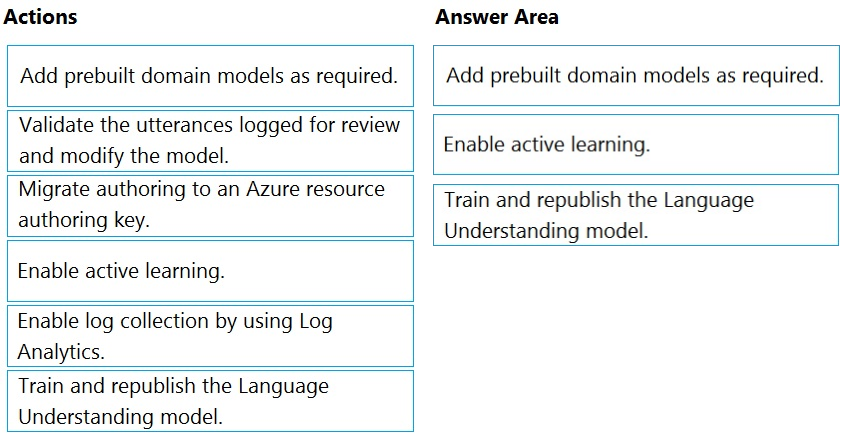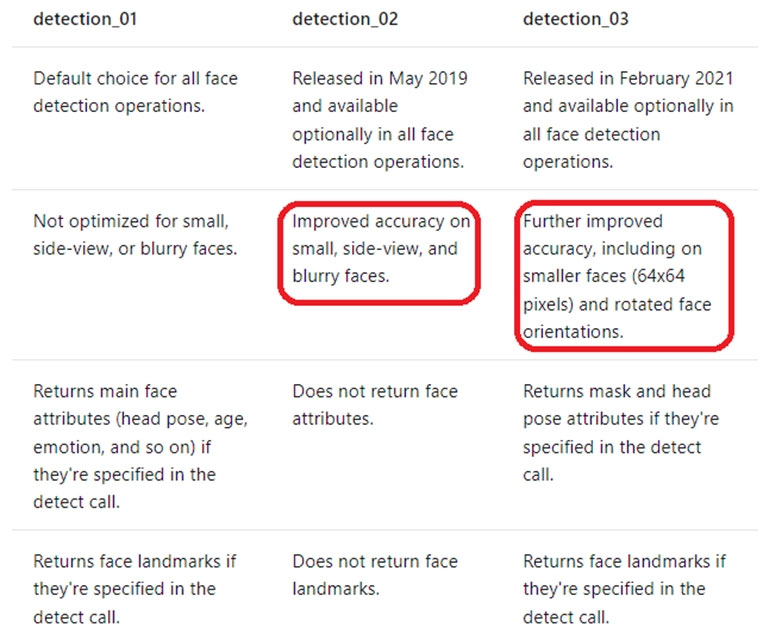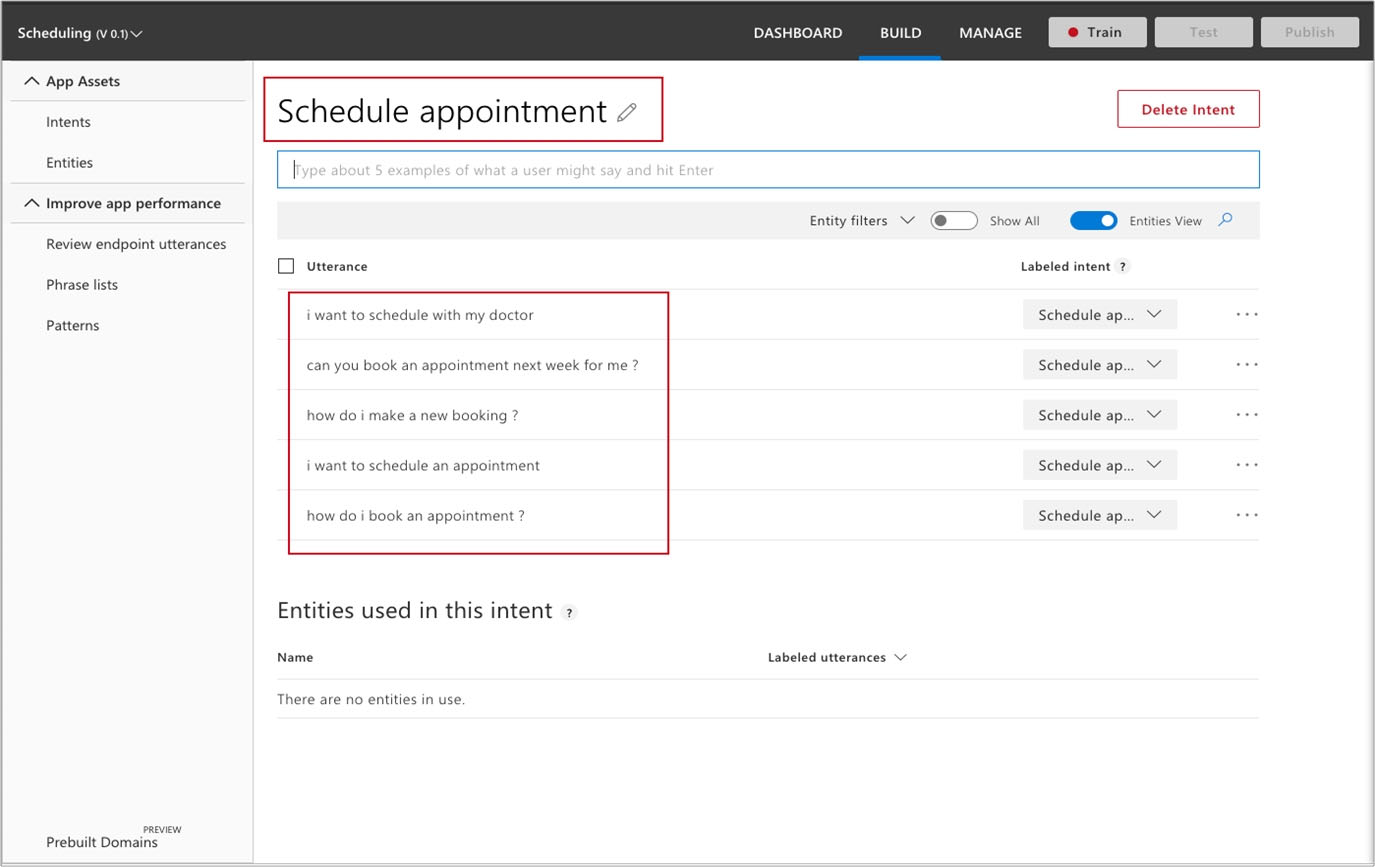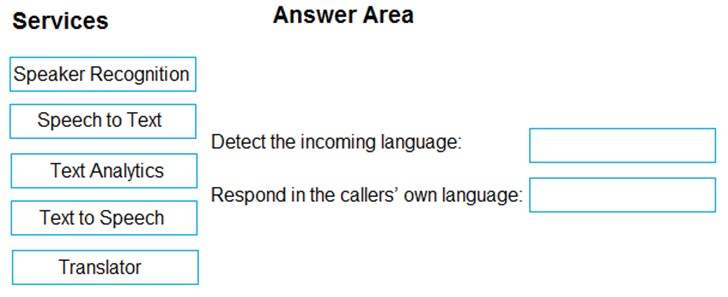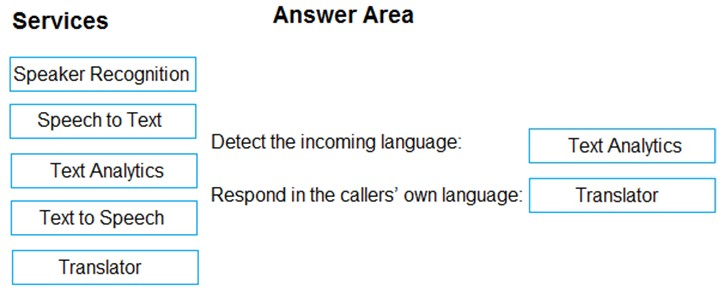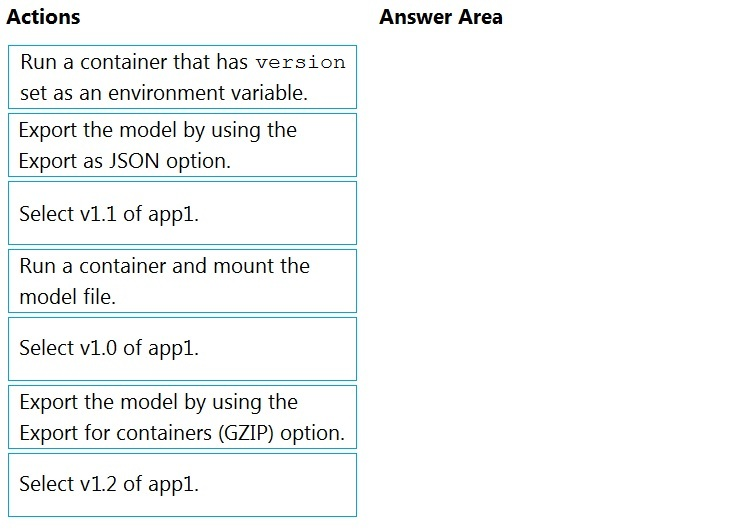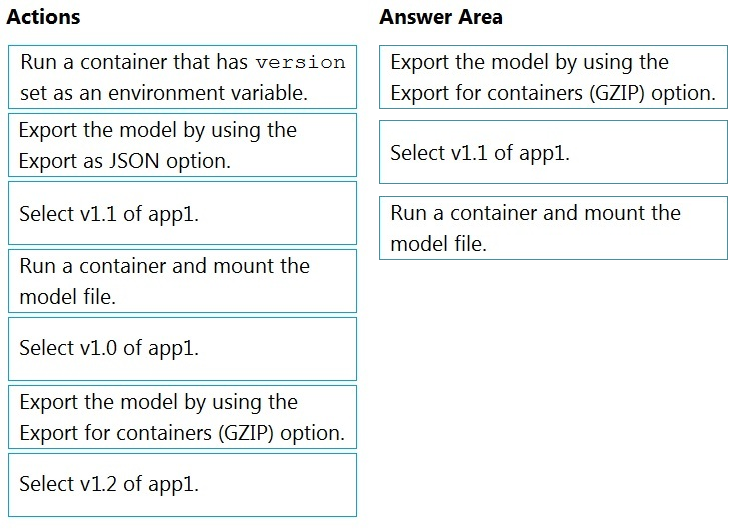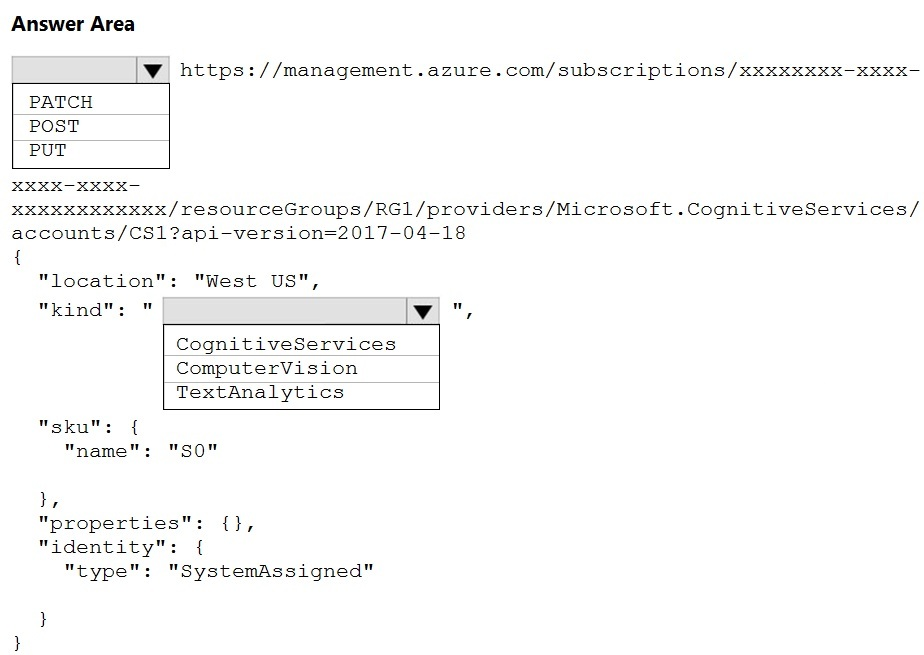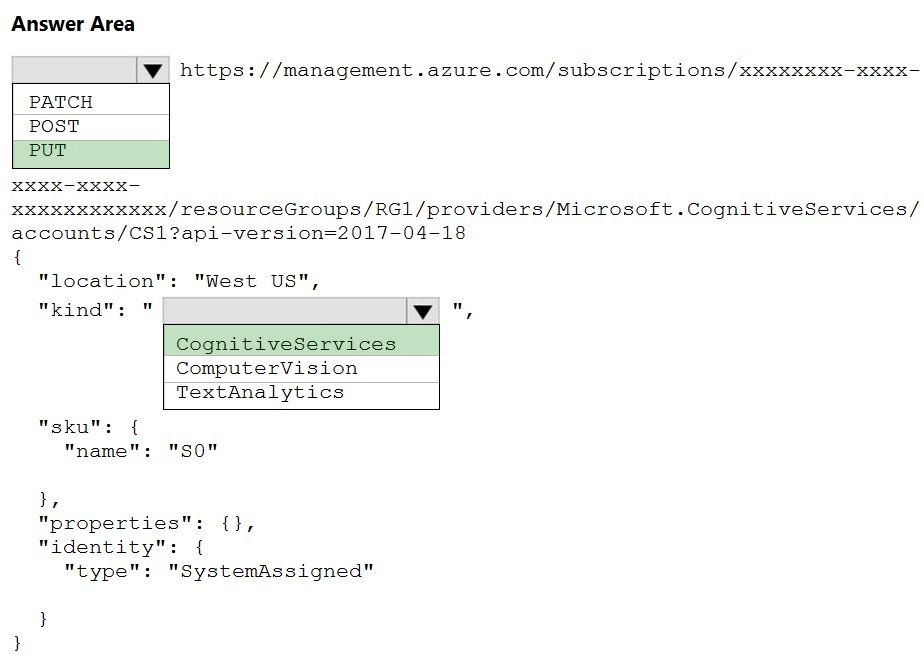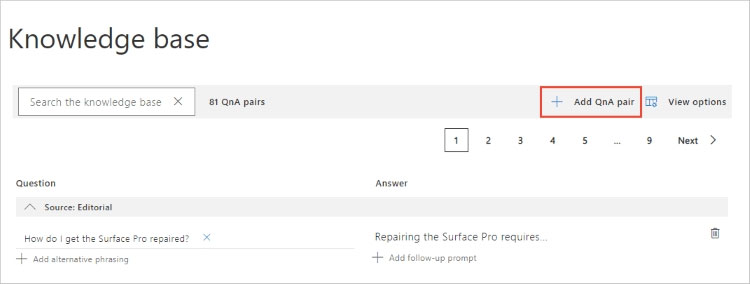AI-102 Mock Test Free – 50 Realistic Questions to Prepare with Confidence.
Getting ready for your AI-102 certification exam? Start your preparation the smart way with our AI-102 Mock Test Free – a carefully crafted set of 50 realistic, exam-style questions to help you practice effectively and boost your confidence.
Using a mock test free for AI-102 exam is one of the best ways to:
- Familiarize yourself with the actual exam format and question style
- Identify areas where you need more review
- Strengthen your time management and test-taking strategy
Below, you will find 50 free questions from our AI-102 Mock Test Free resource. These questions are structured to reflect the real exam’s difficulty and content areas, helping you assess your readiness accurately.
You have an Azure OpenAI model named AI1. You are building a web app named App1 by using the Azure OpenAI SDK. You need to configure App1 to connect to AI1. What information must you provide?
A. the endpoint, key, and model name
B. the deployment name, key, and model name
C. the deployment name, endpoint, and key
D. the endpoint, key, and model type
You have the following C# method for creating Azure Cognitive Services resources programmatically.You need to call the method to create a free Azure resource in the West US Azure region. The resource will be used to generate captions of images automatically. Which code should you use?
A. create_resource(client, “res1”, “ComputerVision”, “F0”, “westus”)
B. create_resource(client, “res1”, “CustomVision.Prediction”, “F0”, “westus”)
C. create_resource(client, “res1”, “ComputerVision”, “S0”, “westus”)
D. create_resource(client, “res1”, “CustomVision.Prediction”, “S0”, “westus”)
You have a Microsoft OneDrive folder that contains a 20-GB video file named File1.avi. You need to index File1.avi by using the Azure Video Indexer website. What should you do?
A. Upload File1.avi to the www.youtube.com webpage, and then copy the URL of the video to the Azure AI Video Indexer website.
B. Download File1.avi to a local computer, and then upload the file to the Azure AI Video Indexer website.
C. From OneDrive, create a download link, and then copy the link to the Azure AI Video Indexer website.
D. From OneDrive, create a sharing link for File1.avi, and then copy the link to the Azure AI Video Indexer website.
You build a Conversational Language Understanding model by using the Language Services portal. You export the model as a JSON file as shown in the following sample.To what does the Weather.Historic entity correspond in the utterance?
A. by month
B. chicago
C. rain
D. location
After you answer a question in this section, you will NOT be able to return to it. As a result, these questions will not appear in the review screen. You are building a chatbot that will use question answering in Azure Cognitive Service for Language. You have a PDF named Doc1.pdf that contains a product catalogue and a price list. You upload Doc1.pdf and train the model. During testing, users report that the chatbot responds correctly to the following question: What is the price of
A. Yes
B. No
You have an app that analyzes images by using the Computer Vision API. You need to configure the app to provide an output for users who are vision impaired. The solution must provide the output in complete sentences. Which API call should you perform?
A. readInStreamAsync
B. analyzeImagesByDomainInStreamAsync
C. tagImageInStreamAsync
D. describeImageInStreamAsync
You build a bot by using the Microsoft Bot Framework SDK and the Azure Bot Service. You plan to deploy the bot to Azure. You register the bot by using the Bot Channels Registration service. Which two values are required to complete the deployment? Each correct answer presents part of the solution. NOTE: Each correct selection is worth one point.
A. botId
B. tenantId
C. appId
D. objectId
E. appSecret
You have an Azure AI service model named Model1 that identifies the intent of text input. You develop a Python app named App1. You need to configure App1 to use Model1. Which package should you add to App1?
A. azure-cognitiveservices-language-textanalytics
B. azure-ai-language-conversations
C. azure-mgmt-cognitiveservices
D. azure-cognitiveservices-speech
DRAG DROP - You are building a retail chatbot that will use a QnA Maker service. You upload an internal support document to train the model. The document contains the following question: "What is your warranty period?" Users report that the chatbot returns the default QnA Maker answer when they ask the following question: "How long is the warranty coverage?" The chatbot returns the correct answer when the users ask the following question: 'What is your warranty period?" Both questions should return the same answer. You need to increase the accuracy of the chatbot responses. Which three actions should you perform in sequence? To answer, move the appropriate actions from the list of actions to the answer area and arrange them in the correct order. Select and Place:
DRAG DROP - You are using a Language Understanding service to handle natural language input from the users of a web-based customer agent. The users report that the agent frequently responds with the following generic response: "Sorry, I don't understand that." You need to improve the ability of the agent to respond to requests. Which three actions should you perform in sequence? To answer, move the appropriate actions from the list of actions to the answer area and arrange them in the correct order. Select and Place:
You are building a conversational language understanding model. You need to enable active learning. What should you do?
A. Add show-all-intents=true to the prediction endpoint query.
B. Enable speech priming.
C. Add log=true to the prediction endpoint query.
D. Enable sentiment analysis.
You are developing the knowledgebase. You use Azure Video Analyzer for Media (previously Video indexer) to obtain transcripts of webinars. You need to ensure that the solution meets the knowledgebase requirements. What should you do?
A. Create a custom language model
B. Configure audio indexing for videos only
C. Enable multi-language detection for videos
D. Build a custom Person model for webinar presenters
You have a file share that contains 5,000 images of scanned invoices. You need to analyze the images. The solution must extract the following data: • Invoice items • Sales amounts • Customer details What should you use?
A. Custom Vision
B. Azure AI Computer Vision
C. Azure AI Immersive Reader
D. Azure AI Document Intelligence
You have an Azure subscription. The subscription contains an Azure OpenAI resource that hosts a GPT-4 model named Model1 and an app named App1. App1 uses Model1. You need to ensure that App1 will NOT return answers that include hate speech. What should you configure for Model1?
A. the Frequency penalty parameter
B. abuse monitoring
C. a content filter
D. the Temperature parameter
You are building an internet-based training solution. The solution requires that a user's camera and microphone remain enabled. You need to monitor a video stream of the user and detect when the user asks an instructor a question. The solution must minimize development effort. What should you include in the solution?
A. speech-to-text in the Azure AI Speech service
B. language detection in Azure AI Language Service
C. the Face service in Azure AI Vision
D. object detection in Azure AI Custom Vision
You are building an app that will use the Azure AI Video Indexer service. You plan to train a language model to recognize industry-specific terms. You need to upload a file that contains the industry-specific terms. Which file format should you use?
A. XML
B. TXT
C. XLS
D. PDF
HOTSPOT - You have an Azure OpenAI resource named AI1 that hosts three deployments of the GPT 3.5 model. Each deployment is optimized for a unique workload. You plan to deploy three apps. Each app will access AI1 by using the REST API and will use the deployment that was optimized for the app's intended workload. You need to provide each app with access to AI1 and the appropriate deployment. The solution must ensure that only the apps can access AI1. What should you use to provide access to AI1, and what should each app use to connect to its appropriate deployment? To answer, select the appropriate options in the answer area. NOTE: Each correct selection is worth one point.
You have the following Python method.You need to deploy an Azure resource to the East US Azure region. The resource will be used to perform sentiment analysis. How should you call the method?
A. create_resource(“res1”, “TextAnalytics”, “Standard”, “East US”)
B. create_resource(“res1”, “ContentModerator”, “S0”, “eastus”)
C. create_resource(“res1”, “ContentModerator”, “Standard”, “East US”)
D. create_resource(“res1”, “TextAnalytics”, “S0”, “eastus”)
HOTSPOT - You are developing a streaming Speech to Text solution that will use the Speech SDK and MP3 encoding. You need to develop a method to convert speech to text for streaming MP3 data. How should you complete the code? To answer, select the appropriate options in the answer area. NOTE: Each correct selection is worth one point.
HOTSPOT - You are developing an application that will use the Computer Vision client library. The application has the following code.For each of the following statements, select Yes if the statement is true. Otherwise, select No. NOTE: Each correct selection is worth one point. Hot Area:
You plan create an index for an Azure Cognitive Search service by using the Azure portal. The Cognitive Search service will connect to an Azure SQL database. The Azure SQL database contains a table named UserMessages. Each row in UserMessages has a field named MessageCopy that contains the text of social media messages sent by a user. Users will perform full text searches against the MessageCopy field, and the values of the field will be shown to the users. You need to configure the properties of the index for the MessageCopy field to support the solution. Which attributes should you enable for the field?
A. Sortable and Retrievable
B. Filterable and Retrievable
C. Searchable and Facetable
D. Searchable and Retrievable
After you answer a question in this section, you will NOT be able to return to it. As a result, these questions will not appear in the review screen. You have a chatbot that uses question answering in Azure Cognitive Service for Language. Users report that the responses of the chatbot lack formality when answering spurious questions. You need to ensure that the chatbot provides formal responses to spurious questions. Solution: From Language Studio, you change the chitchat source to qna_chitchat_professional.tsv, and then retrain and republish the model. Does this meet the goal?
A. Yes
B. No
Your company uses an Azure Cognitive Services solution to detect faces in uploaded images. The method to detect the faces uses the following code.You discover that the solution frequently fails to detect faces in blurred images and in images that contain sideways faces. You need to increase the likelihood that the solution can detect faces in blurred images and images that contain sideways faces. What should you do?
A. Use a different version of the Face API.
B. Use the Computer Vision service instead of the Face service.
C. Use the Identify method instead of the Detect method.
D. Change the detection model.
HOTSPOT - You develop a test method to verify the results retrieved from a call to the Computer Vision API. The call is used to analyze the existence of company logos in images. The call returns a collection of brands named brands. You have the following code segment.For each of the following statements, select Yes if the statement is true. Otherwise, select No. NOTE: Each correct selection is worth one point.
SIMULATION - Use the following login credentials as needed: To enter your username, place your cursor in the Sign in box and click on the username below. To enter your password, place your cursor in the Enter password box and click on the password below. Azure Username: admin@abc.com - Azure Password: XXXXXXXXXXXX - The following information is for technical support purposes only: Lab Instance: 12345678 - Task - You need to create and publish a Language Understanding (classic) model named 1u12345678. The model will contain an intent of Travel that has an utterance of Boat. To complete this task, sign in to the Language Understanding portal at httptc//www.luis-ai/.
DRAG DROP - You need to develop an automated call handling system that can respond to callers in their own language. The system will support only French and English. Which Azure Cognitive Services service should you use to meet each requirement? To answer, drag the appropriate services to the correct requirements. Each service may be used once, more than once, or not at all. You may need to drag the split bat between panes or scroll to view content. NOTE: Each correct selection is worth one point. Select and Place:
DRAG DROP - You plan to use a Language Understanding application named app1 that is deployed to a container. App1 was developed by using a Language Understanding authoring resource named lu1. App1 has the versions shown in the following table.You need to create a container that uses the latest deployable version of app1. Which three actions should you perform in sequence? To answer, move the appropriate actions from the list of actions to the answer area and arrange them in the correct order. Select and Place:
You are developing a solution to generate a word cloud based on the reviews of a company's products. Which Text Analytics REST API endpoint should you use?
A. keyPhrases
B. sentiment
C. languages
D. entities/recognition/general
HOTSPOT - You need to create a new resource that will be used to perform sentiment analysis and optical character recognition (OCR). The solution must meet the following requirements: ✑ Use a single key and endpoint to access multiple services. ✑ Consolidate billing for future services that you might use. ✑ Support the use of Computer Vision in the future. How should you complete the HTTP request to create the new resource? To answer, select the appropriate options in the answer area. NOTE: Each correct selection is worth one point. Hot Area:
SIMULATION - You need to add a question pair to the published knowledge base used by a QnA Maker service named QNA12345678. The question must be: `What will be the next version of Windows?` The answer must be: `Windows 11`. To complete this task, sign in to the QnA Maker portal.
You have an Azure subscription that contains a Language service resource named ta1 and a virtual network named vnet1. You need to ensure that only resources in vnet1 can access ta1. What should you configure?
A. a network security group (NSG) for vnet1
B. Azure Firewall for vnet1
C. the virtual network settings for ta1
D. a Language service container for ta1
HOTSPOT - You are building a call handling system that will receive calls from French-speaking and German-speaking callers. The system must perform the following tasks: • Capture inbound voice messages as text. • Replay messages in English on demand. Which Azure Cognitive Services services should you use? To answer, select the appropriate options in the answer area. NOTE: Each correct selection is worth one point.
HOTSPOT - You build a bot named app1 by using the Microsoft Bot Framework. You prepare app1 for deployment. You need to deploy app1 to Azure. How should you complete the command? To answer, select the appropriate options in the answer area. NOTE: Each correct selection is worth one point.
DRAG DROP - You have a question answering project in Azure Cognitive Service for Language. You need to move the project to a Language service instance in a different Azure region. Which three actions should you perform in sequence? To answer, move the appropriate actions from the list of actions to the answer area and arrange them in the correct order.
HOTSPOT - You are building an app that will automatically translate speech from English to French, German, and Spanish by using Azure AI service. You need to define the output languages and configure the Azure AI Speech service. How should you complete the code? To answer, select the appropriate options in the answer area. NOTE: Each correct selection is worth one point.
You develop a custom question answering project in Azure Cognitive Service for Language. The project will be used by a chatbot. You need to configure the project to engage in multi-turn conversations. What should you do?
A. Add follow-up prompts.
B. Enable active learning.
C. Add alternate questions.
D. Enable chit-chat.
You need to enable speech capabilities for a chatbot. Which three actions should you perform? Each correct answer presents part of the solution. NOTE: Each correct selection is worth one point.
A. Enable WebSockets for the chatbot app.
B. Create a Speech service.
C. Register a Direct Line Speech channel.
D. Register a Cortana channel.
E. Enable CORS for the chatbot app.
F. Create a Language Understanding service.
After you answer a question in this section, you will NOT be able to return to it. As a result, these questions will not appear in the review screen. You are building a chatbot that will use question answering in Azure Cognitive Service for Language. You have a PDF named Doc1.pdf that contains a product catalogue and a price list. You upload Doc1.pdf and train the model. During testing, users report that the chatbot responds correctly to the following question: What is the price of
A. Yes
B. No
DRAG DROP - You are developing a webpage that will use the Azure Video Analyzer for Media (previously Video Indexer) service to display videos of internal company meetings. You embed the Player widget and the Cognitive Insights widget into the page. You need to configure the widgets to meet the following requirements: ✑ Ensure that users can search for keywords. ✑ Display the names and faces of people in the video. ✑ Show captions in the video in English (United States). How should you complete the URL for each widget? To answer, drag the appropriate values to the correct targets. Each value may be used once, more than once, or not at all. You may need to drag the split bar between panes or scroll to view content. NOTE: Each correct selection is worth one point. Select and Place:
You deploy a web app that is used as a management portal for indexing in Azure Cognitive Search. The app is configured to use the primary admin key. During a security review, you discover unauthorized changes to the search index. You suspect that the primary access key is compromised. You need to prevent unauthorized access to the index management endpoint. The solution must minimize downtime. What should you do next?
A. Regenerate the primary admin key, change the app to use the secondary admin key, and then regenerate the secondary admin key.
B. Change the app to use a query key, and then regenerate the primary admin key and the secondary admin key.
C. Regenerate the secondary admin key, change the app to use the secondary admin key, and then regenerate the primary key.
D. Add a new query key, change the app to use the new query key, and then delete all the unused query keys.
After you answer a question in this section, you will NOT be able to return to it. As a result, these questions will not appear in the review screen. You develop an application to identify species of flowers by training a Custom Vision model. You receive images of new flower species. You need to add the new images to the classifier. Solution: You create a new model, and then upload the new images and labels. Does this meet the goal?
A. Yes
B. No
DRAG DROP - You are building an app that will scan confidential documents and use the Language service to analyze the contents. You provision an Azure Cognitive Services resource. You need to ensure that the app can make requests to the Language service endpoint. The solution must ensure that confidential documents remain on-premises. Which three actions should you perform in sequence? To answer, move the appropriate actions from the list of actions to the answer area and arrange them in the correct order.
HOTSPOT - You have an Azure subscription that contains an Azure AI Document Intelligence resource named DI1. You build an app named App1 that analyzes PDF files for handwritten content by using DI1. You need to ensure that App1 will recognize the handwritten content. How should you complete the code? To answer, select the appropriate options in the answer area.
HOTSPOT - You plan to provision Azure Cognitive Services resources by using the following method. You need to create a Standard tier resource that will convert scanned receipts into text.How should you call the method? To answer, select the appropriate options in the answer area. NOTE: Each correct selection is worth one point.
HOTSPOT - You have an Azure subscription that contains an Azure OpenAI resource named AI1. You build a chatbot that will use AI1 to provide generative answers to specific questions. You need to ensure that the responses are more creative and less deterministic. How should you complete the code? To answer, select the appropriate options in the answer area. NOTE: Each correct selection is worth one point.
You develop a Conversational Language Understanding model by using Language Studio. During testing, users receive incorrect responses to requests that do NOT relate to the capabilities of the model. You need to ensure that the model identifies spurious requests. What should you do?
A. Enable active learning.
B. Add entities.
C. Add examples to the None intent.
D. Add examples to the custom intents.
You are building an app that will process scanned expense claims and extract and label the following data: • Merchant information • Time of transaction • Date of transaction • Taxes paid • Total cost You need to recommend an Azure AI Document Intelligence model for the app. The solution must minimize development effort. What should you use?
A. the prebuilt Read model
B. a custom template model
C. a custom neural model
D. the prebuilt receipt model
You have an Azure Cognitive Search solution and an enrichment pipeline that performs Sentiment Analysis on social media posts. You need to define a knowledge store that will include the social media posts and the Sentiment Analysis results. Which two fields should you include in the definition? Each correct answer presents part of the solution. NOTE: Each correct selection is worth one point.
A. storageContainer
B. storageConnectionString
C. files
D. tables
E. objects
After you answer a question in this section, you will NOT be able to return to it. As a result, these questions will not appear in the review screen. You have a chatbot that uses question answering in Azure Cognitive Service for Language. Users report that the responses of the chatbot lack formality when answering spurious questions. You need to ensure that the chatbot provides formal responses to spurious questions. Solution: From Language Studio, you remove all the chit-chat question and answer pairs, and then retrain and republish the model. Does this meet the goal?
A. Yes
B. No
After you answer a question in this section, you will NOT be able to return to it. As a result, these questions will not appear in the review screen. You build a language model by using a Language Understanding service. The language model is used to search for information on a contact list by using an intent named FindContact. A conversational expert provides you with the following list of phrases to use for training. ✑ Find contacts in London. ✑ Who do I know in Seattle? Search for contacts in Ukraine.You need to implement the phrase list in Language Understanding. Solution: You create a new entity for the domain. Does this meet the goal?
A. Yes
B. No
Access Full AI-102 Mock Test Free
Want a full-length mock test experience? Click here to unlock the complete AI-102 Mock Test Free set and get access to hundreds of additional practice questions covering all key topics.
We regularly update our question sets to stay aligned with the latest exam objectives—so check back often for fresh content!
Start practicing with our AI-102 mock test free today—and take a major step toward exam success!


